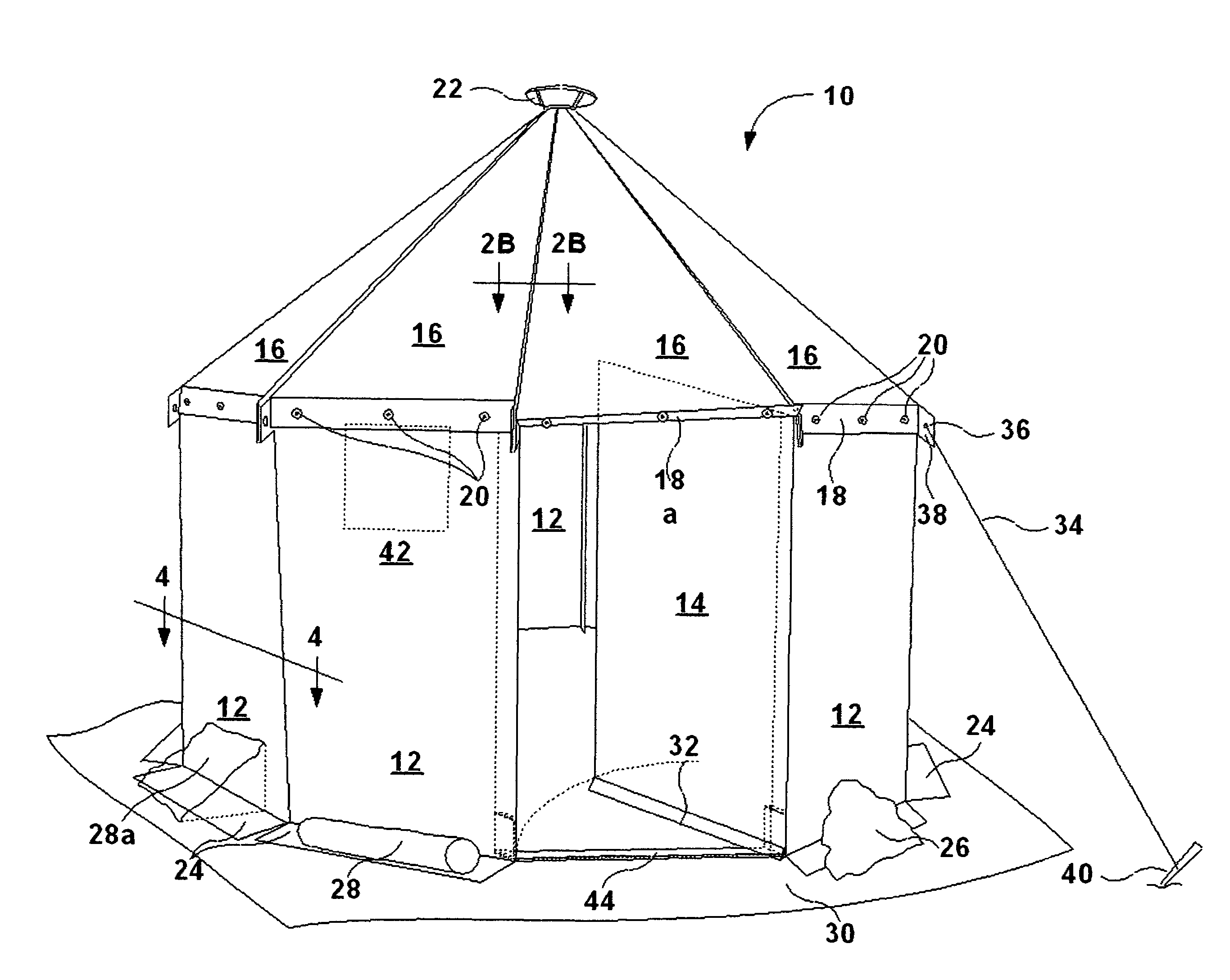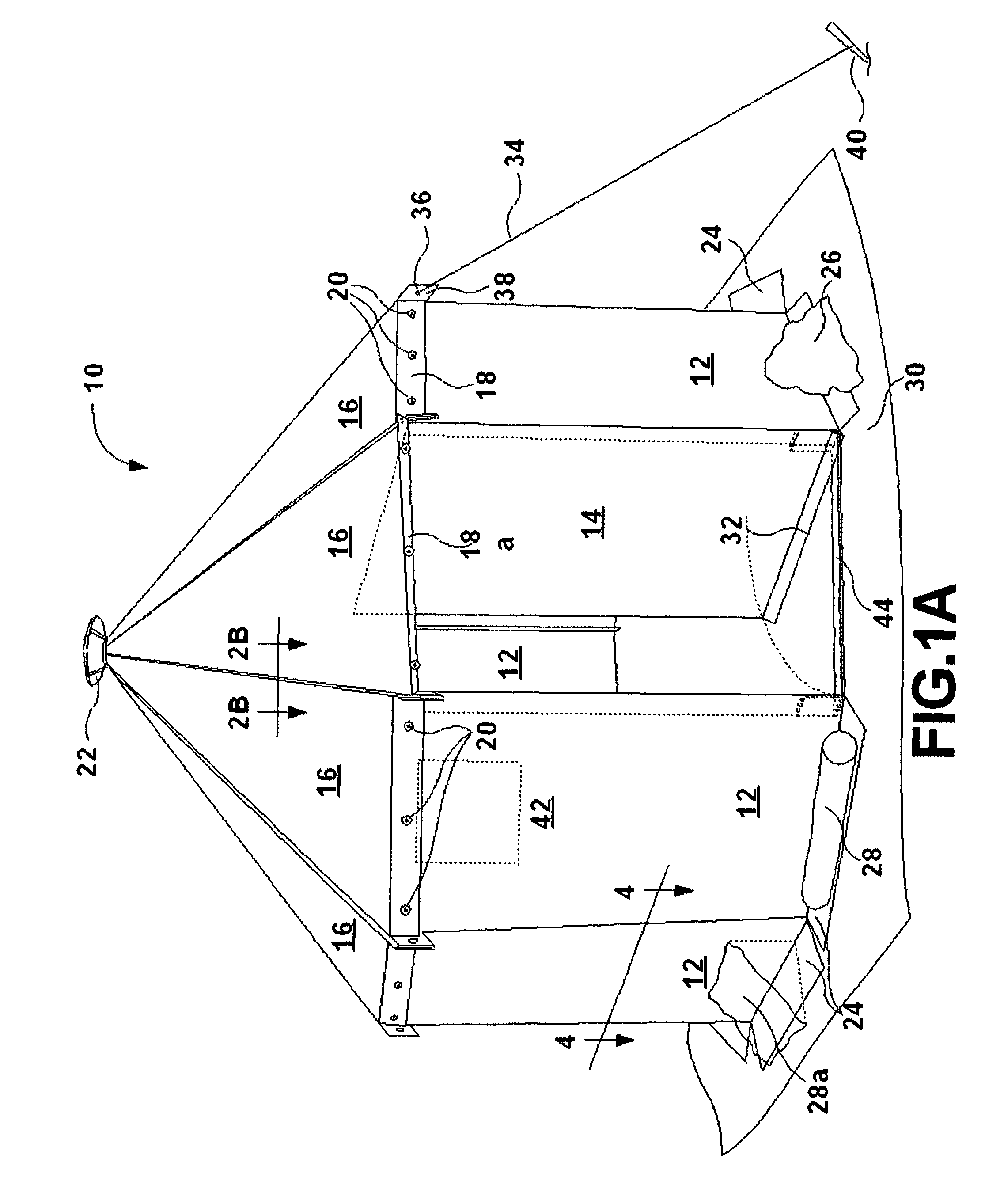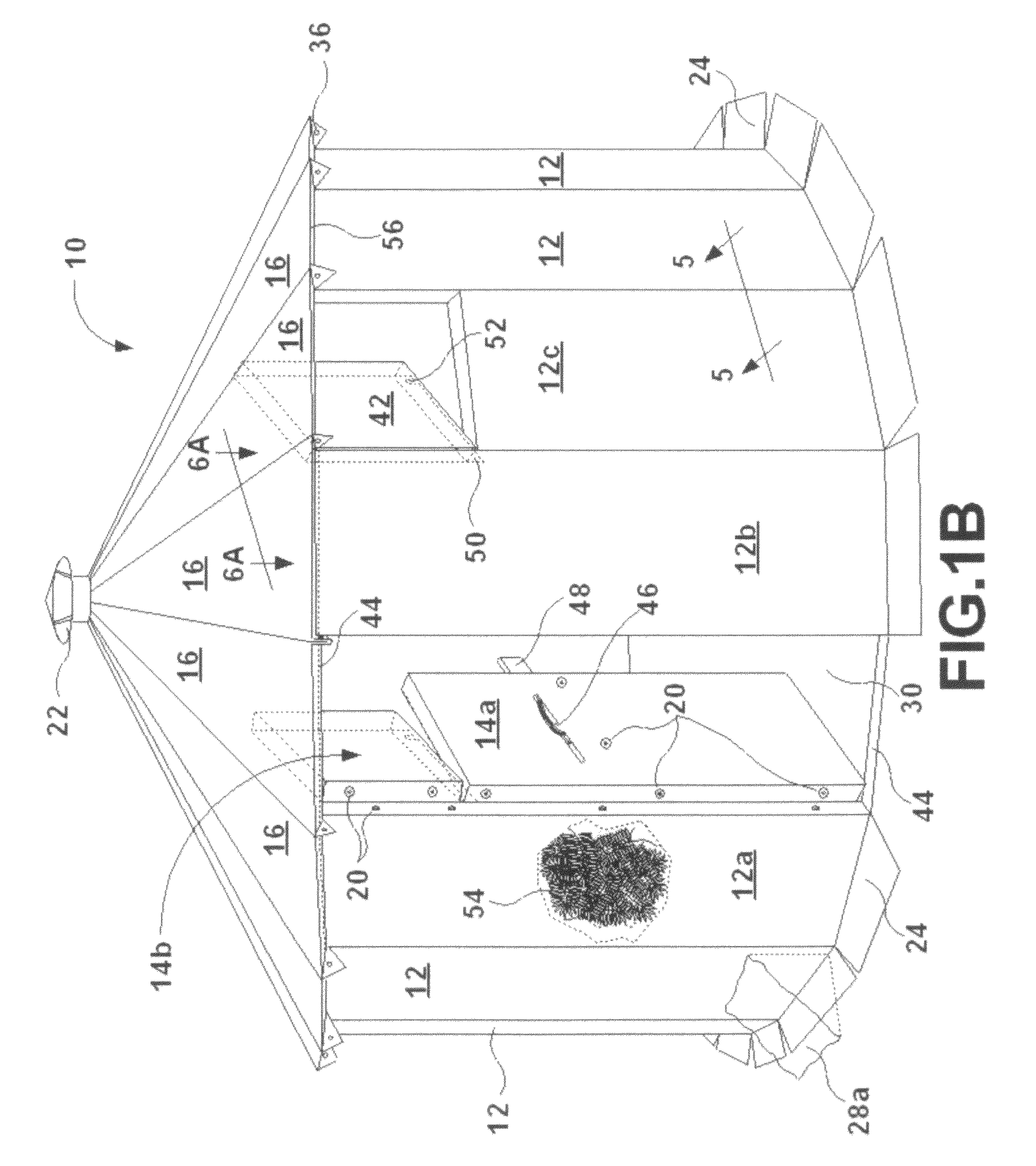Semi-permanent, 4-season, modular, extruded plastic, flat panel, insulatable, portable, low-cost, rigid-walled structure
a modular structure, semi-permanent technology, applied in the field of polygonal structures, can solve the problems of low internal height, relatively short life, and relatively frangible, and achieve the effect of convenient field-assembling, convenient portability and light weigh
- Summary
- Abstract
- Description
- Claims
- Application Information
AI Technical Summary
Benefits of technology
Problems solved by technology
Method used
Image
Examples
Embodiment Construction
[0057]The following detailed description illustrates the invention by way of example, not by way of limitation of the scope, equivalents or principles of the invention. This description will clearly enable one skilled in the art to make and use the invention, and describes several embodiments, adaptations, variations, alternatives and uses of the invention, including what is presently believed to be the best modes of carrying out the invention.
[0058]In this regard, the invention is illustrated in the several figures, and is of sufficient complexity that the many parts, interrelationships, and sub-combinations thereof simply cannot be fully illustrated in a single patent-type drawing. Several of the drawings show phantom lines labeled ‘1001’ that illustrate how an exploded view lines up, or labeled ‘1002’ to illustrate how a swinging door opens, or labeled ‘1003’ to illustrate the continuation of an additional wall panel. Several of the drawings show phantom centerlines labeled ‘1000...
PUM
 Login to View More
Login to View More Abstract
Description
Claims
Application Information
 Login to View More
Login to View More - R&D
- Intellectual Property
- Life Sciences
- Materials
- Tech Scout
- Unparalleled Data Quality
- Higher Quality Content
- 60% Fewer Hallucinations
Browse by: Latest US Patents, China's latest patents, Technical Efficacy Thesaurus, Application Domain, Technology Topic, Popular Technical Reports.
© 2025 PatSnap. All rights reserved.Legal|Privacy policy|Modern Slavery Act Transparency Statement|Sitemap|About US| Contact US: help@patsnap.com



